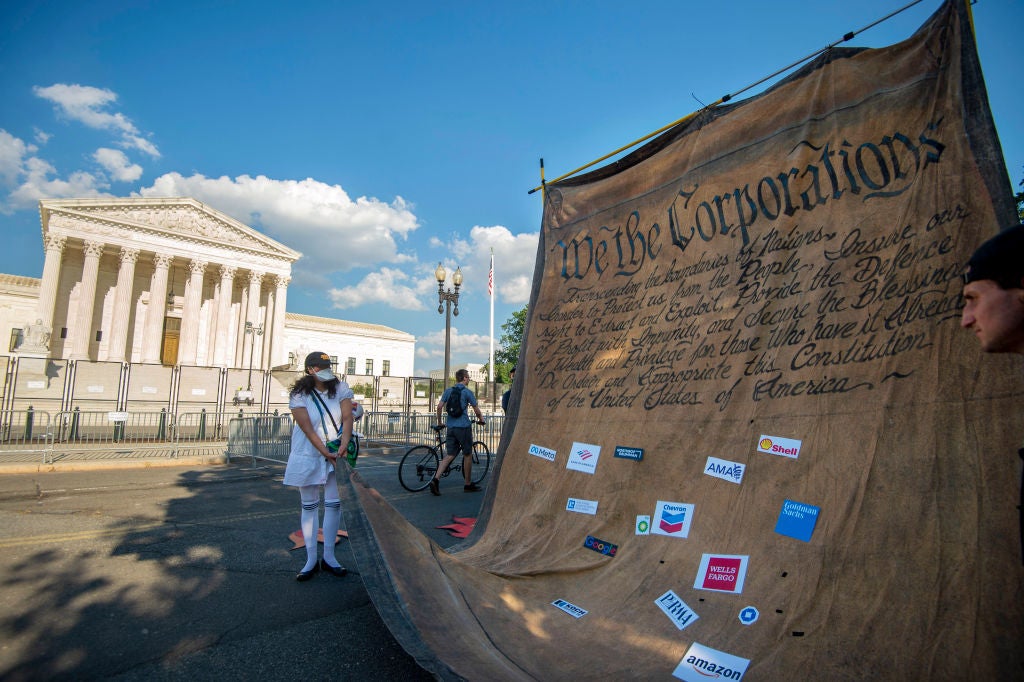If there is any consolation to be found in last week’s US Supreme Court ruling in West Virginia v. Environmental Protection Agency (EPA) it is this: it could have been even worse. The decision written by Chief Justice John Roberts for the 6-3 conservative majority proscribes the EPA’s ability to use a section of the US Clean Air Act to compel a sweeping shift away from coal in the power sector.
The EPA retains the ability to regulate carbon pollution and to limit greenhouse gas emissions from power plants and vehicles – for now. However, the conservative majority also made it clear it is prepared to go much further to constrain regulators’ ability to take aggressive action to protect the environment and public health or to ensure product or workplace safety.

At issue in the case was the EPA’s intention, as proposed in the Obama administration’s 2015 Clean Power Plan, to use section 111(d) of the Clean Air Act to reduce emissions from the power sector not by focusing on improvements at individual power plants, that is “within the fenceline” but by requiring a nationwide shift from coal to low-carbon power sources, what has been called “generation-shifting”. This was a step too far for Roberts and the other justices in the majority.
“It is not plausible that Congress gave EPA the authority to adopt on its own such a regulatory scheme in Section 111(d)," wrote Roberts. "A decision of such magnitude and consequence rests with Congress itself, or an agency acting pursuant to a clear delegation from that representative body.”
As justification for its ruling, the conservative justices applied what they called the “major questions doctrine”. No more deferring to technocrats working at federal regulatory agencies to interpret the intent of Congress for issues that affect the economy. Instead, Congress must provide explicit instructions to regulatory agencies on “major questions” of importance to the country such as action on climate change or the response to Covid-19. No matter that the so-called major questions doctrine was seemingly conjured to suit the ideological goals of the conservative justices.
“By relying on but not sharply defining the major questions doctrine as the basis for its ruling, the Court leaves EPA – and all federal agencies – less sure about what kinds of regulations courts will strike down or uphold in the future,” wrote Cara Horowitz, co-executive director of the Emmett Institute on Climate Change and the Environment at the UCLA School of Law, in a post on the Legal Planet blog.

US Tariffs are shifting - will you react or anticipate?
Don’t let policy changes catch you off guard. Stay proactive with real-time data and expert analysis.
By GlobalData[Keep up with Energy Monitor: Subscribe to our weekly newsletter]
The conservative majority’s readiness to wield the major questions doctrine augurs poorly for the ability of regulators to use the full power of the executive branch to respond to the climate crisis going forward.
“The Court’s specific use of the Major Questions Doctrine is a significant development in the field of administrative law,” wrote a team of attorneys from the Washington, DC-based national law firm Van Ness Feldman.
“Greater use of this doctrine could greatly curtail agency abilities to use existing statutory authority in new ways if the regulations have substantial impacts. This limit on agency regulatory powers could extend not just to the environment but potentially to health care, telecommunications, the financial sector, and other arenas.”
Revival of Build Back Better?
The Supreme Court’s rightward shift should leave no doubt among Democrats about what must happen next: pass the most aggressive possible package of measures to reduce emissions and support clean energy while the party still controls majorities in the House and Senate. What was thought to be a safe harbour for climate action – executive authority vested in the president – is less certain in a world where six conservative justices alone can decide when regulators have overstepped the will of Congress.
The window of opportunity for meaningful action before the November 2022 mid-term elections is closing fast. Less than 40 working days remain on the Senate calendar before the end of September. The last day not just of the fiscal year for federal government but for Democrats to pass legislation via the budget reconciliation process is 30 September. With Senator Mitch McConnell’s Republican caucus implacably opposed to any legislation that would address the climate crisis, Senate Democrats’ only hope of passing such legislation is via budget reconciliation, a filibuster workaround that enables legislation to pass with a simple majority vote.
Senator Joe Manchin remains the primary holdout preventing the Senate’s 50 Democrats from reaching consensus on a legislative package to replace what had been called the Build Back Better Act. However, recent reports have Manchin and Senate Majority Leader Chuck Schumer nearing a deal on a budget reconciliation package that would include prescription drug pricing reform, the extension of subsidies under the Affordable Care Act and around $300bn in tax incentives for clean energy and electric vehicles.
Instead of negotiating in public, Manchin and Schumer have been working quietly in recent weeks to reach a deal behind closed doors. Schumer has told his caucus that fast action on a drug pricing proposal could make it possible to bring a budget reconciliation bill to the Senate floor in late July, according to the Washington Post’s Tony Romm.
With the Supreme Court’s conservative justices signalling they will subject federal regulations to heightened scrutiny – an invitation for lawsuits from Republican state attorneys general and the fossil fuel industry – Senate Democrats are on the clock to secure transformational investments in climate action while they still can.





